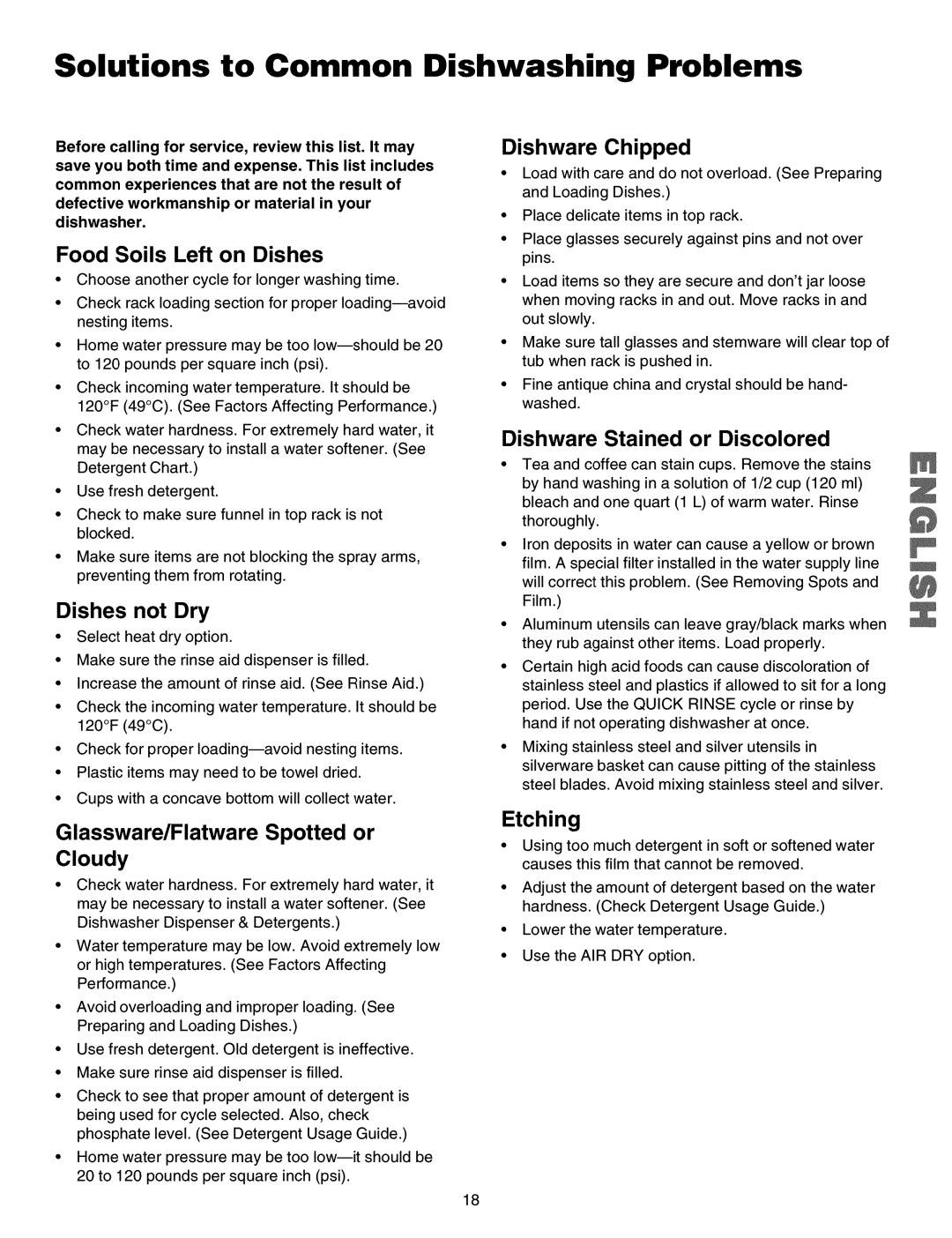587.16073, 587.16074, 587.16072, 587.16079, 587.15079 specifications
The Kenmore 587 series, which includes models 587.15074, 587.15073, 587.15072, 587.15079, and 587.16079, represents a range of high-quality dishwashers designed to enhance your kitchen experience. These models are well-regarded for their performance, efficiency, and technological features, making them a popular choice among homeowners.One of the standout features of the Kenmore 587 series is its impressive cleaning capabilities. The dishwashers are equipped with multi-stage wash systems that use powerful jets and high-temperature water to ensure a thorough clean. This technology effectively removes stubborn stains and food residues from dishes, pots, and pans. Additionally, the models feature adjustable racks and tines, allowing for customizable loading options that accommodate a variety of dishware sizes.
Energy efficiency is a key characteristic of the Kenmore 587 series. Many of these models are ENERGY STAR certified, which means they meet strict energy efficiency guidelines set by the Environmental Protection Agency. This certification helps homeowners save on their utility bills while also reducing their environmental impact. The dishwashers utilize advanced technologies such as smart sensor wash, which detects the soil level of your dishes and adjusts the wash cycle accordingly, further enhancing efficiency.
Noise levels are another critical consideration in dishwasher design, and the Kenmore 587 series excels in this area. With ultra-quiet operation, these dishwashers minimize disruptions in the home, allowing you to run a wash cycle even during quiet times. The use of sound-dampening materials and advanced motor technology contributes to the whisper-quiet performance, making it an ideal choice for open-concept living spaces.
The Kenmore 587 models also feature user-friendly controls and a variety of wash cycles to suit different cleaning needs. With options ranging from heavy-duty to quick wash, users can easily select the appropriate cycle based on their specific load requirements. Furthermore, the sleek design and stainless-steel finish add a modern touch to any kitchen decor.
In summary, the Kenmore 587.15074, 587.15073, 587.15072, 587.15079, and 587.16079 dishwashers offer an impressive combination of cleaning power, energy efficiency, quiet operation, and user-friendly features. These models are an excellent investment for those seeking a reliable and high-performing dishwasher that can handle daily washing tasks with ease.

